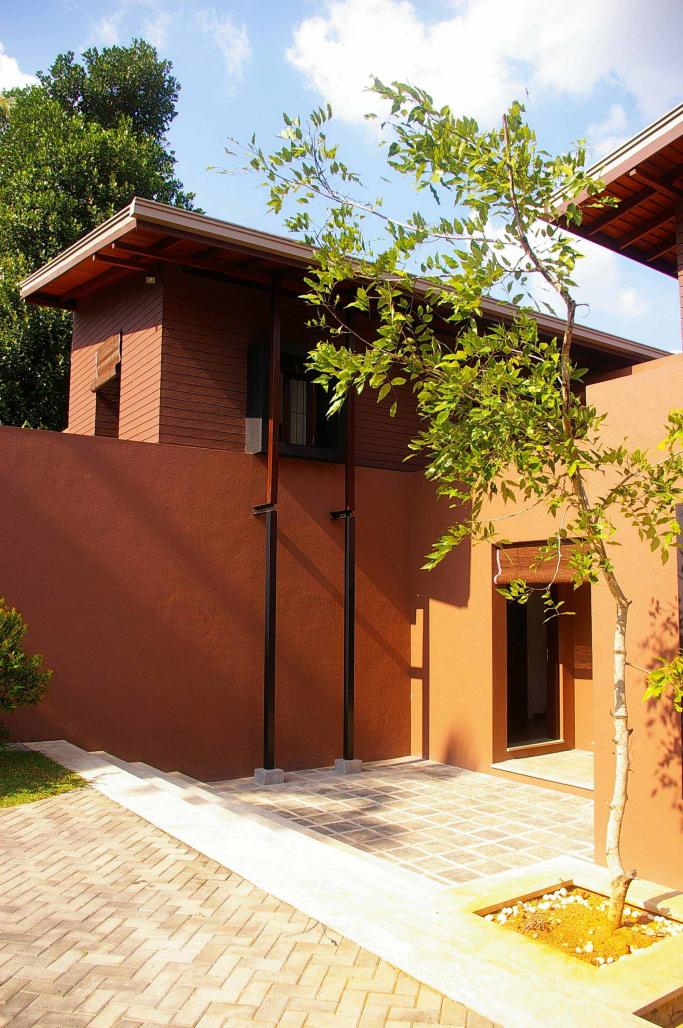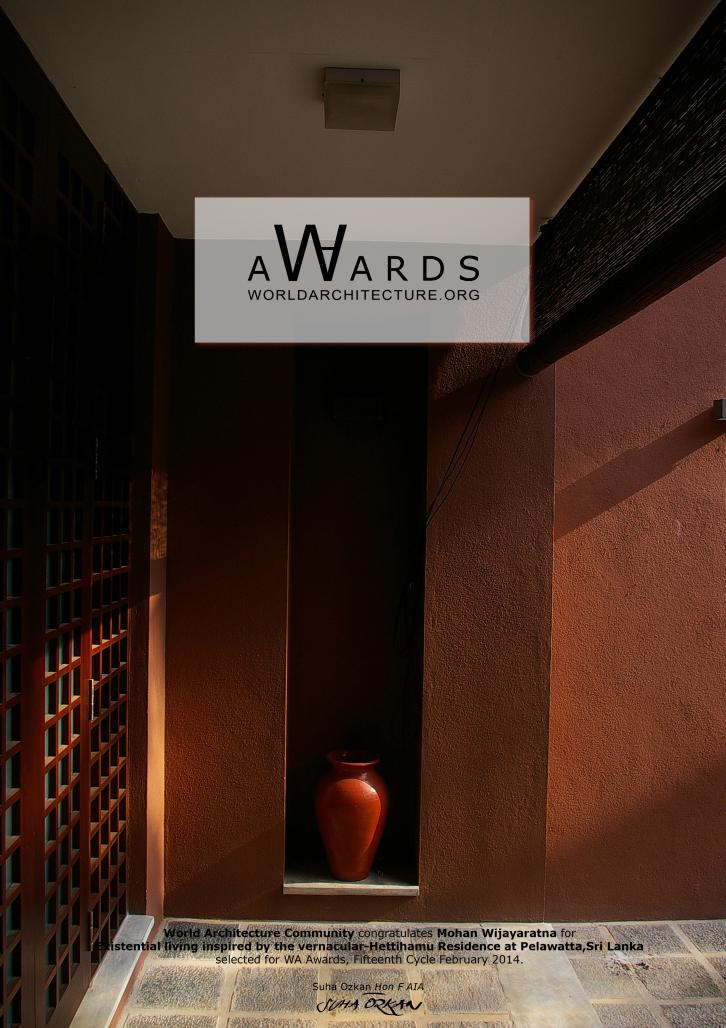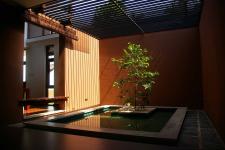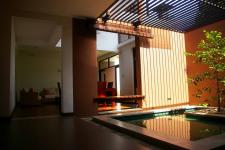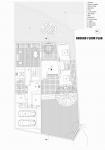Existential living inspired by the vernacular-Hettihamu Residence at Pelawatta,Battaramulla
A dwelling amalgamated with its existing serene context over looking paddy fields…. The Hettihamu’s; a hard working couple associated with the corporate sector are nature lovers who wanted a home which was not pompous and close to nature.
The design strategy was to create a journey which controlled a sequence of events that harmonized with its environment, incorporating the essence of nature that surrounded it and to be true to the materials used.
Travelling along the narrow gravel pathway leading towards the house glimpses of curiosity are observed, as to what would be expected within the plot stimulating one to proceed further. The outside and the fore court are connected through a carefully detailed timber gate that provides a somewhat pervious visual membrane that creates a subtle barrier between the two spaces. The large forecourt which acts as a large gathering space creates a great sense of invitation in a manner with immense grandeur. The forecourt is also at two levels making the experience of progression towards the point of entry into the private spaces more interesting. A built in seat around a tree at the lower terrace level (which is the original ground level made use of) implicates an activity of human interaction being a representation of proof of life in an art form even without the characters being present.
The view of the interior is not exposed at once. It is blocked by a timber framework which is a textured skin.
The first internal space the visitor encounters is the entrance lobby with a shallow pond creating a ‘pause’… The mode of progression slows down creating a mood for further relaxation which is frequently used by the parents as a reading and relaxing space. This lobby space transcends to the main living/dining area on the left which flows out to the garden through a verandah. The living/dining areas have visual connections to the shallow pond area as well as the paddy field that lies beyond. The built in timber seat is detailed in a manner such that it does not block the view of the water body. The dining area comprises of a double height space that creates a connection with the first floor.
The upper floor is planned as a separate adobe for the Hettihamu couple with the master bed, study room and an entertainment area. The master bed room and the entertainment area opens out to the paddy field through open terraces. The study room opens out to a private open terrace.
The appearance of the building reflects the visual formalities of vernacular Sinhalese buildings in an abstract form with a timber section on top of a solid base and an overhanging roof. The details and finishes were done to a minimalist fashion being true to its materials.
Inspiration was drawn from Nature –color and texture was derived from vernacular Sri Lankan buildings which created a sense of belonging “an existential sense” within the Sri Lankan users.
The color brown acted as the main base to its color concept-which was derived from the raw form of wattle and daub walls of traditional construction. The color and texture of timber paneling also was derived from traditional construction while tiling and external pavings (grey, grayish brown and brown)were used to resonate nature/traditional floor finishes and traditional outdoor pavings. Ancient lakes brought inspiration for the use of green color for the pond. White was used as a background color to illuminate and bring about lightness to the interior.
2009
2011
Existential living inspired by the vernacular-Hettihamu Residence at Pelawatta,Sri Lanka by Mohan Wijayaratna in Sri Lanka won the WA Award Cycle 15. Please find below the WA Award poster for this project.
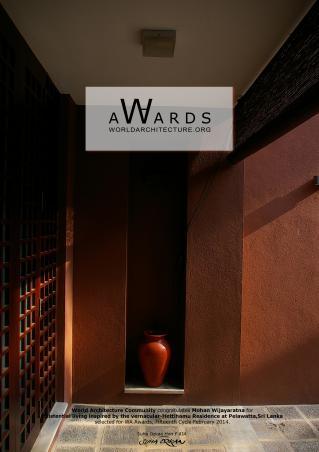
Downloaded 81 times.
Favorited 1 times
